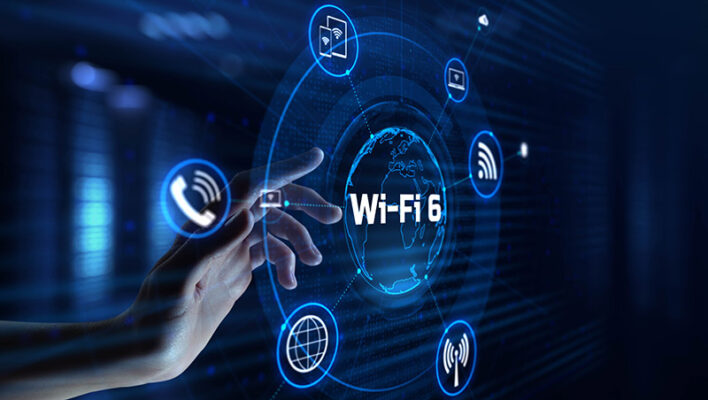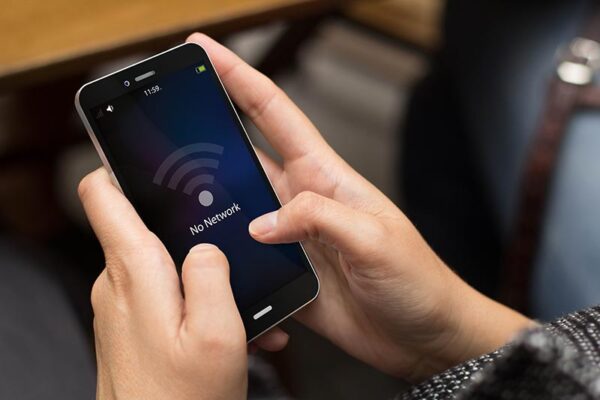Private 5G vs. Wi-Fi: Considerations for Enterprises
By Stefan Mahr
November 7, 2024
Estimated reading time: 10 minutes
The need for reliable and secure enterprise connectivity is evolving. Companies may often choose between a private 5G network or standard Wi-Fi. However, the choice isn’t always straightforward.

These two technologies are not mutually exclusive and can complement each other. Enterprises often combine private networks for critical applications and public Wi-Fi for day-to-day business.
The network must become stronger and more scalable as connected devices and Internet of Things (IoT) applications increase. While both networks are becoming more flexible, they are also becoming more complex. Enterprises can select the best network technology for their needs once they understand the distinct advantages and shortcomings.

Private 5G is a nonpublic, dedicated wireless network using cellular 5G technology. Enterprises can manage the network themselves or leverage the expertise of telecom operators and vendors. An enterprise has full control over the data with consistent fiber-like speeds.
The enterprise space has historically belonged to Wi-Fi. However, needs have evolved with different use cases requiring special coverage and higher reliability and security.
Enterprises can benefit from private 5G’s three most significant advantages for critical applications:
These three enhancements alone outperform traditional Wi-Fi and other legacy networks. This is especially true for business- and mission-critical.
In addition to ultrahigh bandwidth, ultralow latency and enhanced security, private 5G offers other advantages for enterprises, including:

Enterprises have total control over the entire private 5G infrastructure. They can modify the network to their specific requirements.
Customizing the network is a key benefit for enterprises. Organizations no longer must rely on public one-size-fits-all networks. They can modify and tailor the settings to the unique needs of each use case.
Private 5G offers superior range and performance compared to Wi-Fi. This technology is ideal for large outdoor areas, from distributed production locations to smart cities.
5G enables automation and remote monitoring of equipment in areas that don’t have public networks and require reliability. This technology can improve productivity and safety in places like mining sites.
The possibilities are endless as new IoT applications keep popping up for different verticals. Connectivity enhancements drive applications and services that weren’t possible before 5G, such as augmented and virtual reality.
Private 5G networks offer organizations the flexibility to innovate for various use cases. These networks can help enterprises scale and transform operations as the digital world evolves.
The advantages of private 5G networks are impressive. Still, the potential hurdles organizations may encounter are important to consider.
The initial 5G setup and installation may require a larger investment in infrastructure, including base stations and antennas. Integrating this technology into the existing environment is also something to consider, as it would add to the cost.
Private 5G networks do not always achieve the same large scale as public networks. 5G may not be fully available in certain areas. However, they can still benefit enterprises that have contained connectivity like manufacturing plants that require higher performance and security. In addition, the ability to switch between private and public 5G networks may be beneficial for some use cases.
Long-term maintenance and updates with future expansions can result in added costs and more resources.
Private 5G supports a wide variety of verticals. As applications and devices develop, opportunities increase for different use cases across myriad verticals, such as:

Traditional public mobile network operators (MNOs) also operate private networks and offer them as a service. However, some new players can also manage and offer private network services, including:
This growing trend will continue with the latest evolution of market expansion.

Wi-Fi is a shared wireless technology. It uses radio waves to transmit data between your device and a router in your home office or a public hotspot. The router connects to the internet with a cable or fiber line.
This technology has the advantage of being adopted as the long-time standard. However, private 5G is gaining traction in many industries like health care. A hybrid approach is used when Wi-Fi performance is limited, and new applications and devices are lacking.
Over the last two decades, Wi-Fi has improved. Each generation brings faster speeds and lower latency. User experience has also improved when opening it up to more devices.
Wi-Fi 6, the next standard of Wi-Fi technology, has improved reliability and reduced latency. It allows network access points like routers to handle higher demand from devices while using less power. The technology supercharges routers, enabling them to multitask in ways that have not been possible before.
Enterprises typically use Wi-Fi for IT office and site services applications. Employee phones, and business- and mission-critical applications use private 5G.
Wi-Fi 6 and later offer smarter, more efficient IoT-enabled business operations for enterprises, including the following advantages:

Wi-Fi 6 access points are typically less expensive than 5G base stations. Wi-Fi standards are license-free to save on costs.
Wi-Fi technology enables a wireless connection, eliminating the need for fixed cables and reducing clutter. It also allows devices to be mobile and available in settings like airports and other public locations.
Wi-Fi 6 and newer can connect more devices at once, making communication easier on the same network.
The latest standards provide faster connectivity and lower latency than older versions of Wi-Fi and improve response times with functions like video calls.
Even though Wi-Fi is widely adopted as the long-time standard, it has considerable shortcomings:

Unlike private 5G, Wi-Fi may experience interference from other devices, metal machinery and even walls. Interference from electronic devices or the environment can disrupt the signal and limit the range.
In fast-moving environments, Wi-Fi experiences interference with metal machines and other devices and requires constant adjustment. On the other hand, private networks are a deploy-and-forget solution.
Wireless networks are open to many security risks. Wi-Fi security can lack strong encryption and authentication protocols. This opens wireless networks to cyberattacks and infected devices that compromise security. Strong wireless security measures and even employee training are necessary for organizations to mitigate risks.
The distance that devices can be located from a wireless access point while maintaining a reliable connection is limited. The range still depends on factors beyond the router type. Obstacles like other electronic devices or walls can interfere with the connection.
Wi-Fi planning and network design can be more expensive than a private wireless network. Creating good coverage and eliminating interference points on the floor can be tricky and take several weeks of planning.
There are also additional costs when upgrading Wi-Fi to the next standard. Enterprises would need to purchase devices (e.g., access points or routers), which can be more costly.
Wi-Fi devices rely on electricity and consume an increasing amount of it. Power outages can cause devices to become inoperable, disrupting critical wireless services. Private networks using a private slice of the public 5G network can stay operational for longer during power outages.
Connection speeds may be slower in areas with many connected devices. If there are too many devices on the same wireless channels competing for bandwidth (e.g., many users in a virtual conference), signals can be dropped.
Wi-Fi serves several use cases. This technology has advanced and become essential for indoor environments and various industries. The pandemic accelerated its adoption, leading Wi-Fi into new areas like telemedicine and online education. It is changing industries with smarter and more efficient IoT-enabled business operations.

Wi-Fi market segments include:

Private 5G and Wi-Fi are evolving, and new upgrades and applications are being released. Industries like health care and manufacturing undergo massive digital transformations along with tools from artificial intelligence (AI) to automation. These tools can put pressure on networks and need more advanced connectivity.
Carefully determine your enterprise’s needs. Compare your needs to the pros and cons of private 5G networks and Wi-Fi to assist in making better decisions. Discuss your requirements with an expert in these networks and your industry.
Telit Cinterion, a global IoT enabler, has vetted experience helping organizations support 5G and Wi-Fi solutions. We were the first top-tier IoT and mobile broadband module vendor to join the OnGo Alliance and drive private 5G innovation and adoption. Speak to our experts to learn how we can bring your organization a full-suite IoT solution.
Editor’s Note: This blog was originally published on 11 December 2019 and has since been updated.